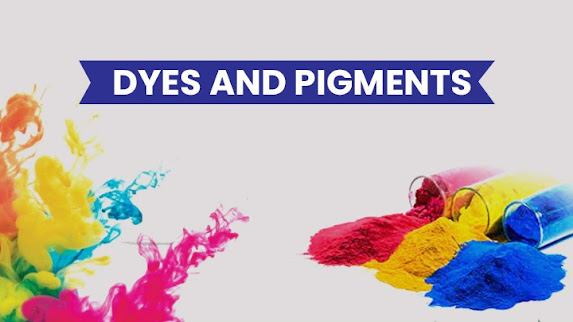Dyes and pigments are both types
of colorants used to add color to various materials. However, there are some
key differences between the dyes and pigments.
Dyes are colorants that are
soluble in a liquid solvent. When a dye is added to a material, it dissolves
into the material, creating a uniform and transparent color. Dye Manufacturers in India, Dyes are
commonly used to color fabrics, paper, textile, leather and other materials.
Pigments, on the other hand, are
insoluble particles that are mixed with a binding agent to create a paste or
powder. When applied to a material, the pigment particles are dispersed but not
dissolved, creating an opaque and non-uniform color. Pigments are commonly used
in paints, inks, plastics, fabrics, cosmetics and food.
Another key difference between dyes and pigments is their durability. Dyes tend to be less durable than pigments, as they can fade or bleed over time, especially if exposed to sunlight or washing. Pigments, on the other hand, are more resistant to fading and are often used in applications that require long-lasting color, such as outdoor paints.
Dyes:
- Dyes can be derived from natural sources, such as plants and animals, or they can be synthetic, produced through chemical processes.
- Dyes are typically used on materials that have a high affinity for the dye molecule, such as cotton, silk, and wool.
- Dyes can be categorized into different types based on their chemistry, such as acid dyes, basic dyes, and direct dyes.
- Dyes can also be classified based on their application method, such as immersion dyeing, printing, and spray dyeing.
Pigments:
- Pigments can be organic (carbon-based) or inorganic (metal-based) compounds, and they can be derived from natural sources or synthesized in a laboratory.
- Pigments are typically used on materials that have a low affinity for the pigment particles, such as plastics and metals.
- Pigments can be categorized into different types based on their chemical composition, such as titanium dioxide, iron oxide, and phthalocyanine blue.
- Pigments can also be classified based on their particle size, such as Nano-pigments, micro-pigments, and macro-pigments.
Top Dyes Manufacturers in India, describes both dyes and pigments
have advantages and disadvantages, and the choice between the two depends on
the specific application and desired outcome. For example, dyes are often
preferred for coloring fabrics, as they provide a more even and vibrant color,
while pigments are often preferred for painting and printing, as they offer a
wider range of colors and greater durability.

No comments:
Post a Comment